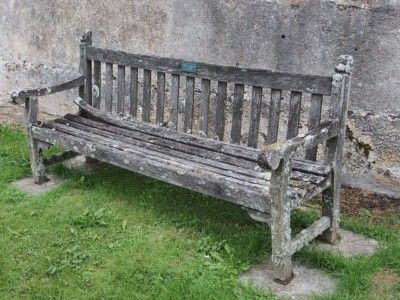
Restore old furniture yourself
Reuse old furniture instead of disposing of it. This is a motto, which is lived in recent years by more and more people.
In addition to recycling and so-called upcycling, restoration in particular ensures that even old things can be used again.
In the case of a restoration, the result is usually so convincing that the furniture looks much more beautiful after processing than before.
However, this will only work if the restoration of the furniture is properly planned and executed.
New stability for old wooden furniture
Wood is a particularly popular material in the field of housing. However, it has a decisive disadvantage: over time, individual elements can warp and the furniture made from them stands on shaky legs.
Especially with tables and chairs, this is not conducive to comfort.
The good news: in terms of better statics, wooden furniture can be restored quite easily.
A particularly simple, yet effective and inexpensive method is to drill a small hole in the problematic joint.
Wood glue is filled into the hole that is created. So that nothing goes wrong and yet the entire cavity is filled, a small plastic syringe should be used.
An alternative to wood glue is to make small triangles out of wood. These are glued or nailed into affected corners as reinforcement.
Inexpensive plywood is suitable for the manufacture, because the triangles are attached exclusively in places that are not visible.
The old varnish must come off
In the case of old furniture that has been painted, there is usually a completely different problem in addition to the static: the surface becomes brittle, looks worn and simply old.
To balance this „lived-in“ look, the old paint must be carefully removed. Sanding of all furniture, however, should be done only by people who know what they are doing.
If too much of the old material is sanded off, the stability of the piece of furniture may suffer as a result. In addition, it is difficult to apply new varnish when the wood is already badly damaged.
As an alternative to sanding, hot air can ensure that the old varnish gives way to a new coat of paint. But here, too, care should be taken. If the hot air stays too long in one place, the wood burns.
Shiny surfaces for furniture like new
If the old paint has been removed, particularly stubborn paint residues usually remain in places. This can be carefully scraped off with a fine spatula.
Before it goes to varnish, the exposed wood should be cleaned. For this purpose, a lint-free, soft cloth can be used. When moistening, care must be taken that the wood does not become too wet.
Once the wood has been properly prepared, the question is how to ensure a new shine on old furniture. On the one hand, the wood can be painted.
On the other hand, there is the possibility of oiling and waxing the wood. The second option is much more environmentally friendly.
If old furniture is oiled and waxed, there is usually another advantage in addition to the ecological point of view.
The furniture looks more authentic, natural and high quality. Varnish can – depending on the application technique, substrate and thickness – shine unnaturally and take the furniture the famous retro charm.
Refining the surface with wax
Waxing old furniture not only serves a purely visual purpose, but an even layer of wax also protects the wood from aging again. Wax is applied in principle similar to ordinary varnish.
First, a thin layer of wax is applied with a soft, flat brush. It is important to work in the direction of the grain and not against it. The wax should then be given enough time to dry completely.
Depending on the type of wood and layer thickness, this takes one to two hours. An inconspicuous spot on the underside of the piece of furniture can be used to check whether the wax is already dry.
The first wax layer is roughened with a fine sandpaper. After that, a second, slightly thicker layer of wax is applied. This should look as even as possible. For accurate work, sufficient light is irreplaceable.
Once the second layer has also dried, the wood is once again polished with a clean cloth. This last important step gives the old piece of furniture a silky sheen.
Rustic look can be achieved by scarfing
If waxed and oiled furniture does not look authentic enough, a layman can also try his hand at so-called scarfing. Various softwoods are particularly suitable for this form of processing, which does not require the wood to be painstakingly sanded.
In most cases a simple blowtorch is used for scarfing. This can borrow hobbyists in the hardware store or ask friends for help.
The blowtorch is slowly moved back and forth close over the wood. Once the wood begins to visibly smolder, the affected area is extinguished with water.
If all places were worked on with the blowtorch and the optics convinced, the piece of furniture can be rubbed with a wire brush. In this step the structure is created, which reminds of a relief and gives the furniture the special look.
However, do not brush against the wood fibers to avoid deep scratches.





